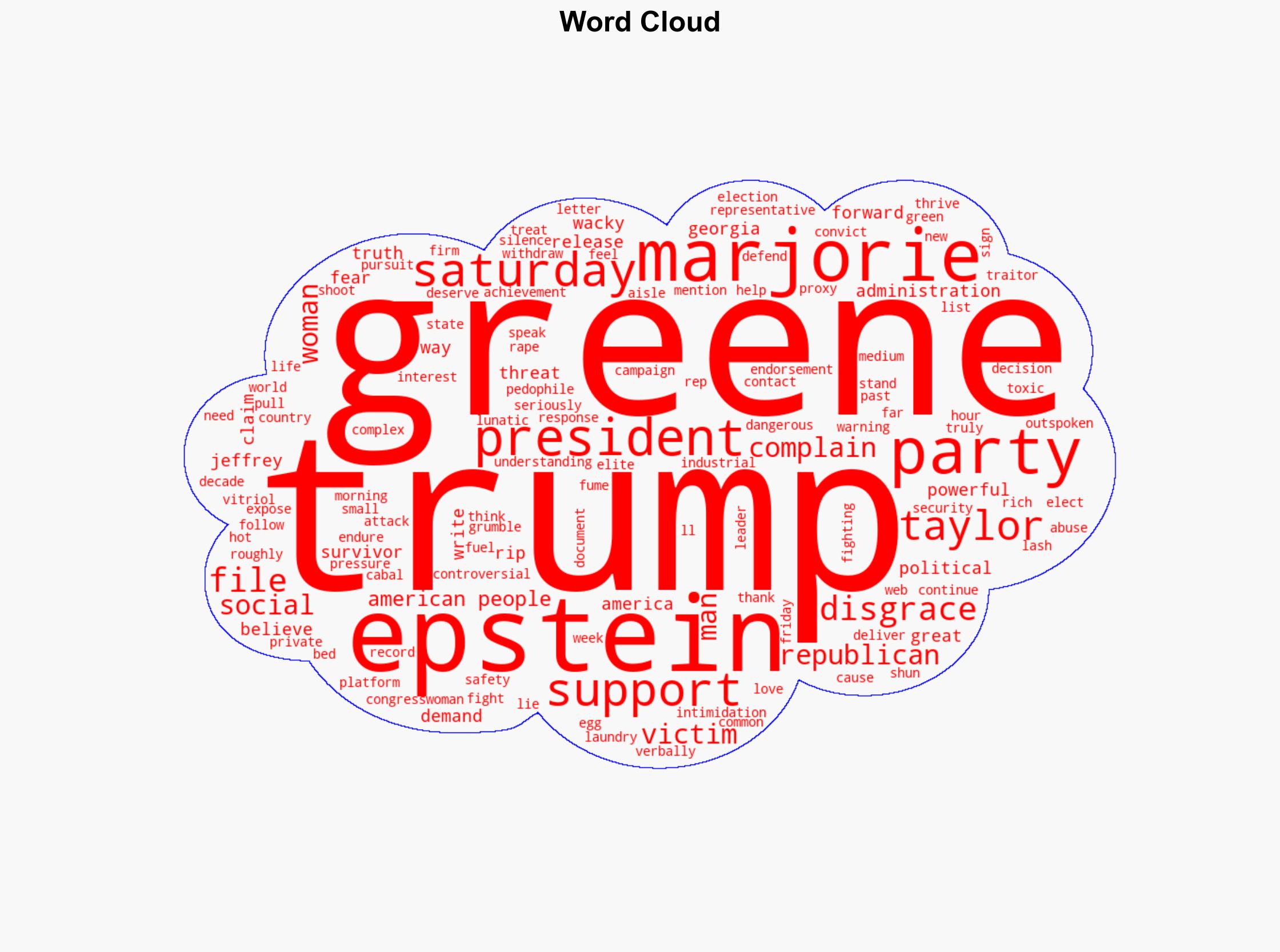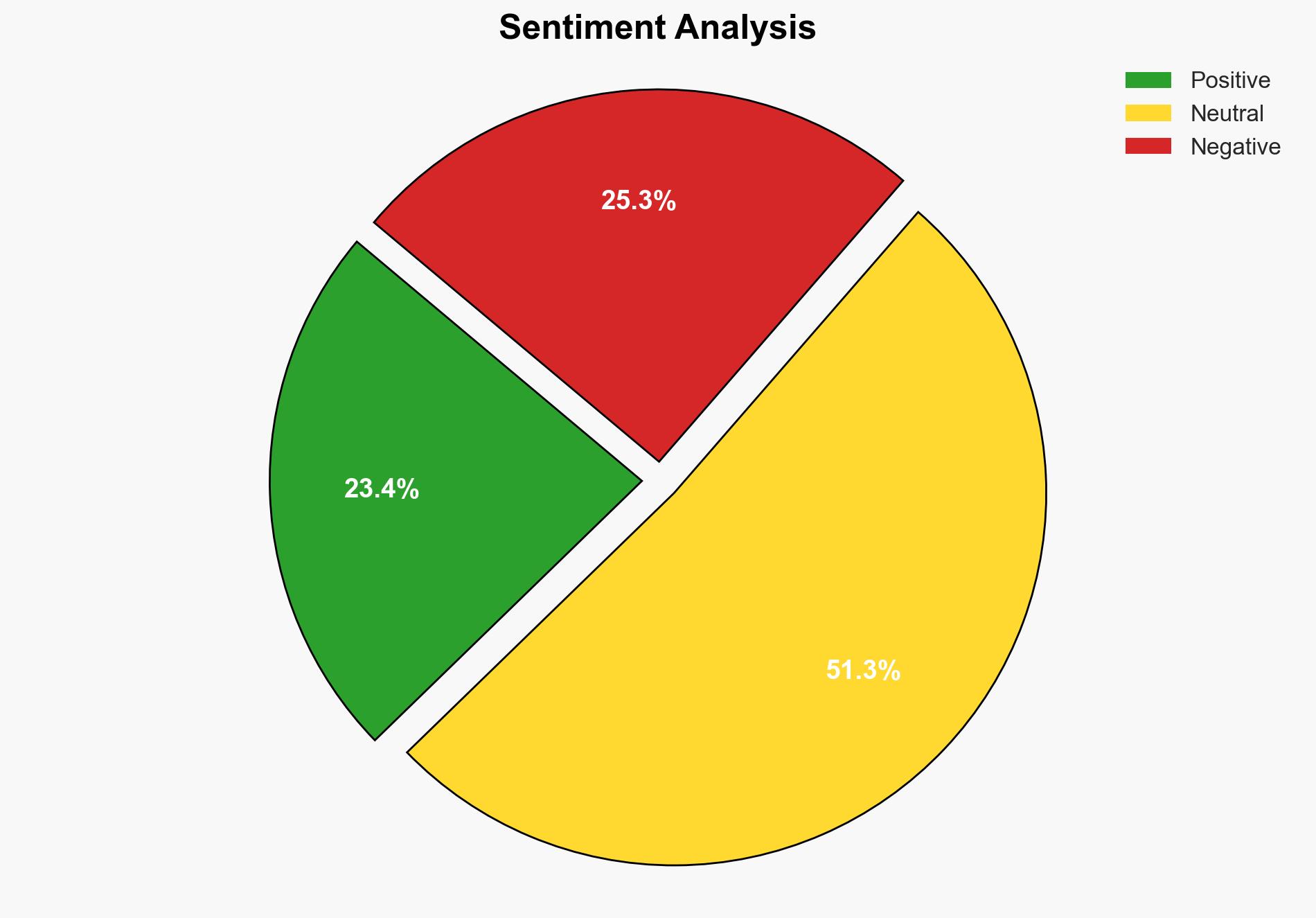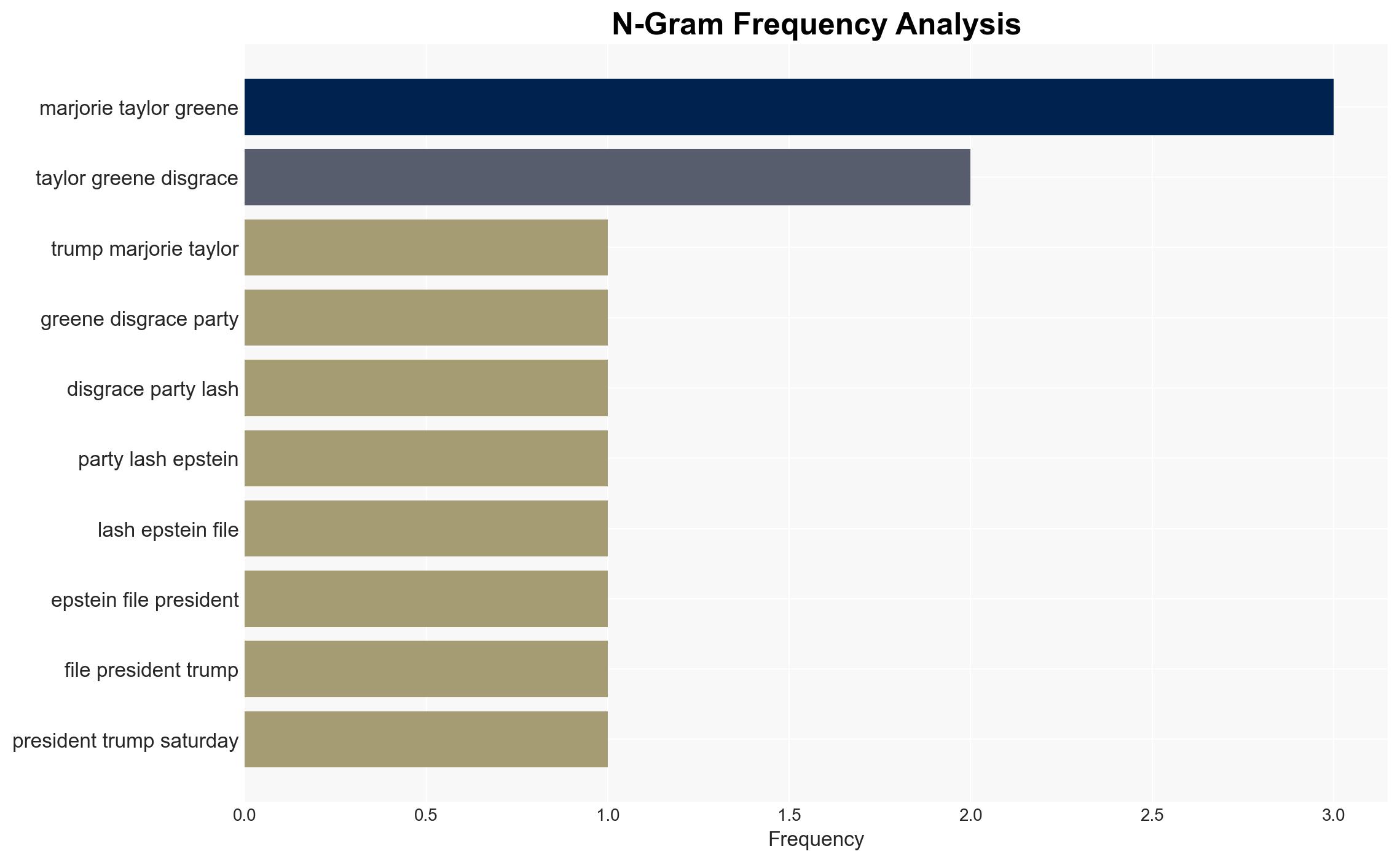Trump calls Marjorie Taylor Greene disgrace to party after she lashes out at president over Epstein files – New York Post
Published on: 2025-11-15
AI-powered OSINT brief from verified open sources. Automated NLP signal extraction with human verification. See our Methodology and Why WorldWideWatchers.
Intelligence Report:
1. BLUF (Bottom Line Up Front)
The most supported hypothesis is that the conflict between Donald Trump and Marjorie Taylor Greene is a strategic maneuver by Greene to distance herself from Trump’s influence and position herself as a champion of transparency and victim advocacy. Confidence Level: Moderate. Recommended action includes monitoring Greene’s political movements for signs of a broader strategic shift and assessing potential impacts on Republican party dynamics.
2. Competing Hypotheses
Hypothesis 1: Marjorie Taylor Greene’s public criticism of Donald Trump and the demand for Epstein files is a genuine effort to advocate for transparency and justice for Epstein’s victims.
Hypothesis 2: Greene’s actions are a calculated political strategy to distance herself from Trump and appeal to a broader base, potentially positioning herself for future political ambitions.
The second hypothesis is more likely due to Greene’s history of controversial statements and strategic positioning within the Republican party. Her actions align with a broader trend of some Republicans seeking to redefine their political identities post-Trump presidency.
3. Key Assumptions and Red Flags
Assumptions include the belief that Greene’s actions are primarily politically motivated rather than ideologically driven. A red flag is the potential for Greene’s statements to be used as a tool for political deception, masking ulterior motives. Bias risks involve underestimating Greene’s influence within the party and overestimating the impact of her statements on Trump’s base.
4. Implications and Strategic Risks
The conflict could exacerbate divisions within the Republican party, leading to a potential realignment of factions. This could impact party cohesion and electoral strategies. There is a risk of increased informational warfare as both sides leverage media to sway public opinion. Economically, the controversy could affect donor dynamics within the party.
5. Recommendations and Outlook
- Monitor Greene’s rhetoric and actions for signs of a strategic shift or alignment with other political figures.
- Assess the impact of this conflict on Republican voter sentiment and potential shifts in party strategy.
- Best-case scenario: The conflict leads to a constructive dialogue on transparency and victim advocacy.
- Worst-case scenario: The division deepens, weakening the Republican party’s electoral prospects.
- Most-likely scenario: The conflict results in temporary media attention with limited long-term impact on party dynamics.
6. Key Individuals and Entities
Donald Trump, Marjorie Taylor Greene, Jeffrey Epstein.
7. Thematic Tags
Regional Focus, United States, Republican Party, Political Strategy, Media Influence, Transparency Advocacy
Structured Analytic Techniques Applied
- Causal Layered Analysis (CLA): Analyze events across surface happenings, systems, worldviews, and myths.
- Cross-Impact Simulation: Model ripple effects across neighboring states, conflicts, or economic dependencies.
- Scenario Generation: Explore divergent futures under varying assumptions to identify plausible paths.
Explore more:
Regional Focus Briefs ·
Daily Summary ·
Support us
·





